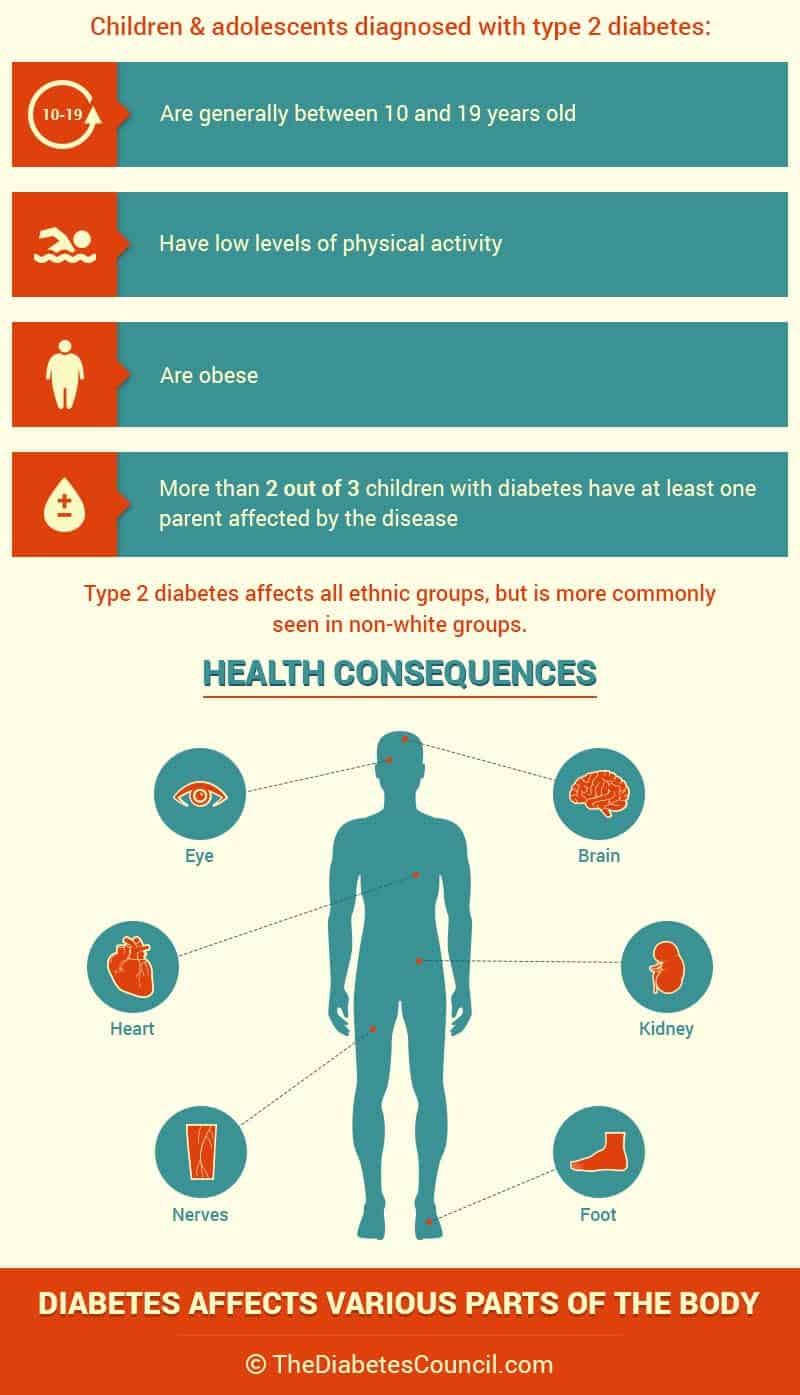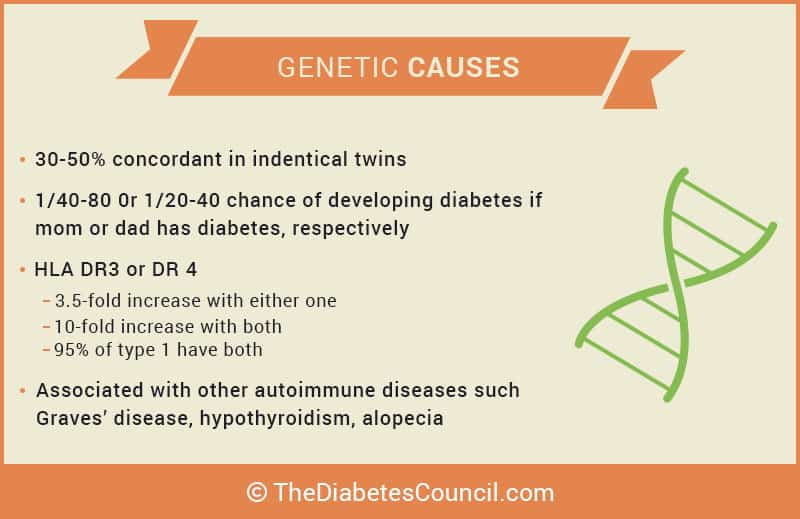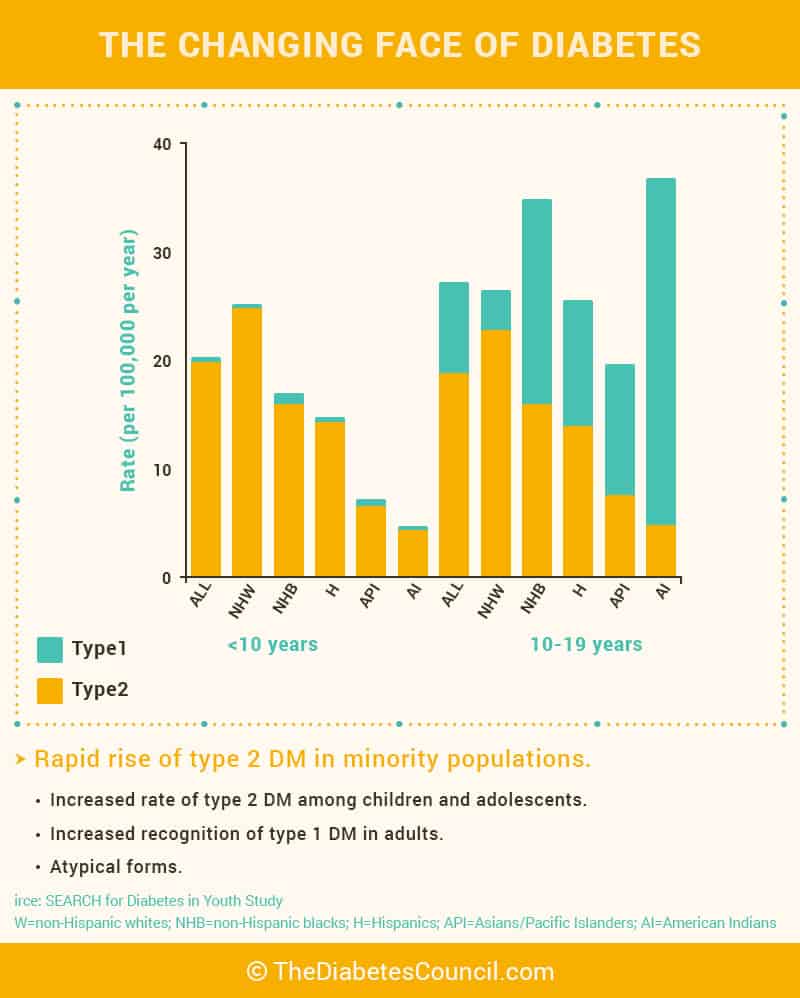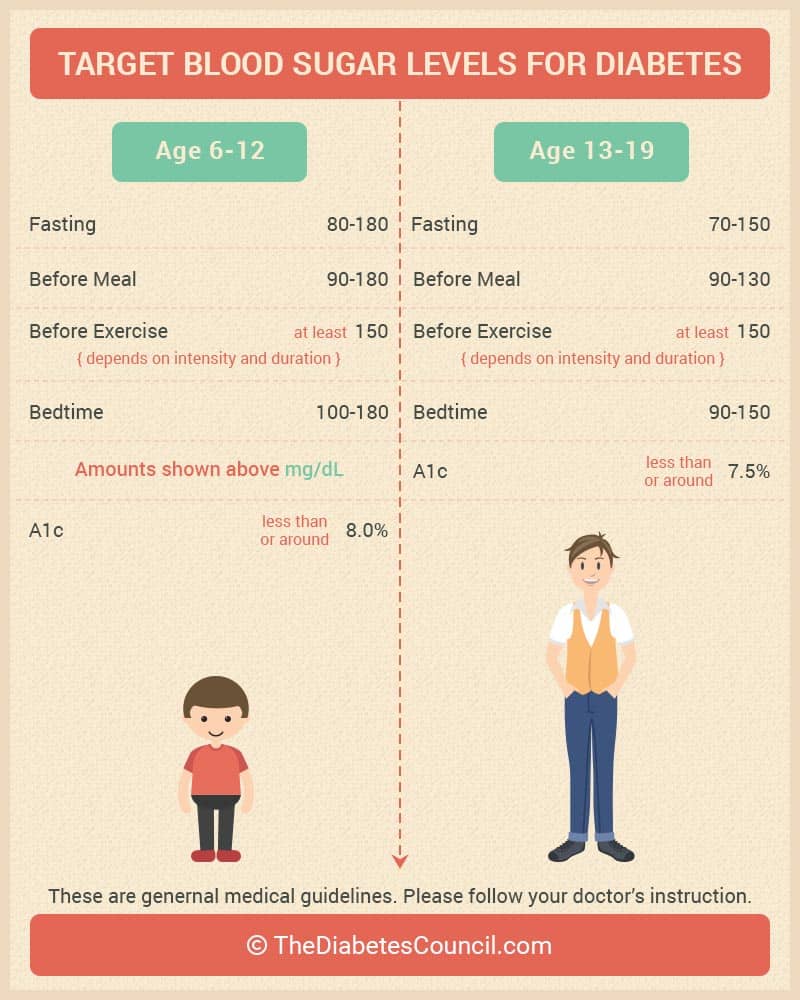
One of the hardest things about being an adolescent is going through puberty and facing the challenges that it brings. The emotional roller coasters and the physical changes seem endless and impossible. But how does a teen go through puberty with diabetes? How are things different for them? The following article explores the relationship between puberty and diabetes.
Contents
How does puberty affect Type 1 diabetes?
During puberty, many physical changes occur that can affect one’s diabetes. Most importantly, the growth hormone causes lean body mass to double over in the 2 to 5 years during puberty. This increase in the growth hormone makes it harder for insulin to work in the body. That struggle is called insulin resistance. A normal child would just make more insulin, but a child with diabetes that does not make insulin or that has limited insulin must increase the amount of insulin that they give themselves to keep their blood sugar under control. This increase can be up to 30-50% more insulin than normal.
Also, an earlier onset of puberty can lead to a diagnosis of Type 1 diabetes in some girls because of the increase in estrogen that occurs during puberty.
I recommend reading the following articles:
Signs and symptoms of diabetes as an adolescent

- Weight loss
- Excessive thirst
- Increased appetite
- Elevated levels of ketones in the blood or urine
- Elevated levels of glucose in the blood or urine
To be diagnosed with diabetes, these symptoms will need to have been experienced for several weeks. If the individual is underweight or of a normal weight, then Type 1 diabetes is suspected. If they are overweight, it could then be either Type 1 or Type 2 diabetes. The physician will need to run certain tests to know which one it is because the treatment for each type is different. People with Type 1 diabetes will definitely need insulin, while those with Type 2 diabetes can possibly avoid the use of insulin injections by replacing them with pills and making significant changes to their lifestyles to keep their blood sugar in control.
An endocrinologist should be consulted when an adolescent is diagnosed with diabetes. They specialize in the disease and know what the effects of puberty can be. If diabetes is suspected, then a physician should be contacted right away. Nearly 30% of newly diagnosed Type 1s find out they have the disease when they have Diabetic Ketoacidosis, a life-threatening problem that is caused by the blood sugar being extremely out of control.
What are the causes of diabetes in an adolescent?
To explain the causes of diabetes, the facts about how the body works must be understood. In a healthy person, the pancreas makes insulin. This insulin must pair with glucose molecules that enter the body through food and together they are used by the body as fuel and energy. If there is not enough insulin, then the glucose molecules cannot be used. Instead, they just linger in the blood stream and can cause damage to the body and cause dehydration, organ failure, and many other severe issues. When people are diagnosed with hyperglycemia, or high blood sugar, it is literally high levels of glucose in the blood.
Type 1 diabetes is caused when the cells in the pancreas that make the insulin, known as the beta cells, are destroyed and there is no insulin. Type 1 diabetes is an autoimmune disease, but injury to the pancreas can also destroy the beta cells. As the image below shows, there is a genetic connection. The HLA DR3 and DR 4 are alleles that increase the risk for an individual to develop the disease. Other autoimmune disorders can also partner with Type 1 diabetes as well, which complicates the disease even further.
Type 2 diabetes used to be extremely rare in children, but it is becoming more common. With this disease, the cells stop accepting the insulin and resistance happens. The biggest cause of this insulin resistance is being overweight, especially in the midsection. Other risk factors include:
- Family history
- Female gender
- Unhealthy eating habits
- Low physical activity
- Being American Indian, Hispanic, Asian, or African-American
As the image below demonstrates, the number of children with Type 2 diabetes is higher in ages of 10-19 and is more common in certain ethnic groups:
Puberty in women vs men
The normal changes for a pubescent female include the onset of menstruation, widening of hips and an increase in adipose tissue, hair growth in the pubic area as well as under the armpits, breast growth, and a general growth spurt. For an adolescent with diabetes, the change in the adipose tissue and body composition adds to the risk of problems for Type 2 diabetes because the extra fat increases the blood sugar. Also, girls with diabetes are more likely to gain weight during puberty and have an increased risk of developing hyperandrogenism (higher than normal levels of androgen) and Polycystic Ovary Syndrome.
Another important thing to consider about girls who have diabetes is that for some, their blood sugar increases a few days before their menstrual cycle begins and then it drops during the first few days of their period. Although the delay of puberty seems to be minimized in well controlled diabetes there is still more irregularity and amenorrhea (no bleeding at all).
There is no difference in the level of estrogen in females with diabetes and those with no diabetes. However, these hormonal changes make glycemic control harder for girls early in puberty, which can lead to organ damage as well as cardiovascular issues. For this reason, it is important for these girls to have well controlled blood sugar levels.
Signs of puberty for boys include increased body hair as well as broadening of the shoulders and a general growth spurt. Glycemic control is harder for boys later in puberty, which also raises their risk for complications of diabetes later into adulthood such as retinopathy and nephropathy (eye and kidney damage).
In both males and females, the emotional rollercoaster that happens during puberty is also an issue to deal with diabetes. Many teens want independence, and rebel against their parents and other authoritative figures, which could lead to non-compliance with having a good control over their diabetes.
More about this is mentioned later in the article.
How does diabetes affect puberty?
The main goal for adolescents with diabetes is to reduce their risk for complications and have healthy development through puberty. This can be achieved by maintaining good blood sugar levels. The amount of insulin that is given must be enough to keep the teen within a healthy range.
Not giving enough insulin can lead to:
- Poor control of blood sugar
- Weight loss
- Delay in puberty
- Delay in skeletal maturation
Giving too much insulin can cause:
- Weight gain
- Poor diet habits
- Low blood sugar
Diabetes can make puberty a lot harder for teens. It can cause the emotional issues to be worse than normal, and can cause them to engage in risky behaviors such as unprotected sex or alcohol consumption, which in turn can affect their diabetes even more. Although most teens are prone to these kinds of behaviors, the lack of control for diabetics makes their risk even higher.
Can diabetes delay puberty?
In teens without diabetes, girls usually begin puberty around the ages of 10-14 and boys near 12-16. If an adolescent has diabetes, having no insulin can delay puberty because the normal hormone cascade is disrupted.
In one study, adolescents with Type 1 diabetes did have a delay in menarche and puberty, but their sexual maturity was complete at a normal age. The delay in puberty is associated with an increased BMI, elevated A1C, and the length that the individual has had diabetes before puberty began. The best way to reduce the risk of having a delay is to have good blood sugar control.
Another study found that 25% of boys with Type 1 diabetes had lower than average levels of testosterone, height, weight, and BMI’s. They were also found to be sexually immature. Once again, controlling blood sugar levels is the best way to reduce any developmental delays.
Can diabetes cause early puberty?
As mentioned earlier, diabetes is known to delay puberty, not cause it to come early. Other issues, such as thyroid problems, which are common in Type 1 diabetes, can cause early puberty.
There have been studies that have found that all girls are starting to have a general earlier onset of puberty. Scientists believe that this is because of the chemicals and anti-androgens that are found in foods and the environment that we live in.
What are the effects of puberty on diabetes?
When blood sugar is not under control, problems such as kidney failure, eye problems, and nerve damage can occur. This is why it is so important to keep the glucose within normal limits. Puberty makes it very hard to control the disease though. It can make complications come earlier if the insulin is not adjusted to meet the new needs.
To support that puberty makes diabetes harder to control, studies have found that people who were diagnosed with the disease before puberty have a greater number of complications than those who were diagnosed afterwards.
Those that are diagnosed during puberty or immediately before have an even higher risk of complications. One study showed that children that were diagnosed with diabetes before puberty went on for an average of 12 years without any complications, but those that were diagnosed from ages 10-18 (when puberty hits), only had an average of 6.5 years without problems. A reason behind that is because those diagnosed as children have an idea of how to control their blood sugar, whereas adolescents that are newly diagnosed are not as willing to familiarize themselves with the diagnosis and may also be angry and non-compliant.
How to manage diabetes in puberty
In general, diabetes can be managed by checking blood sugars regularly and keeping the numbers in a healthy range. For Type 1 diabetes, since the pancreas does not make any insulin, it is almost a guarantee that insulin injections will be required. For Type 2 diabetes, sometimes pills, such as Metformin can be taken to help control blood sugar along with healthy lifestyle changes such as diet and exercise.
When dealing with diabetes and puberty, the treatment is the same. The only difference though is that more insulin may be required to control the blood sugar because of the insulin resistance that the body will have developed. It is important to not give too much insulin though because of the risk of low blood sugar. The other issue that is different about dealing with diabetes in puberty is the emotional changes that adolescents are going through. Support must be provided to ensure that they do not rebel against their diabetes and stop taking care of themselves.
Having a team to work with the teen is a great idea. Make sure the parents, doctor, and other important members in the adolescent’s life are aware of the diagnosis and of any changes to it. A psychologist may also be a good idea. He or she can provide the teen with coping skills in case things get hard.
Puberty and Type 2 diabetes
An early onset of puberty can lead to an earlier onset of diabetes because of the increase in fat that happens during the physical changes. Having the extra weight may accelerate the diagnosis of Type 2 diabetes. Researchers have found that girls that started their period from ages 8 to 11 had a 70% increased risk of developing Type 2 diabetes compared to those that started at age 13.
The increased appetite of pubescent adolescents can also lead to poor food choices which can make it hard to control their blood sugar, especially when they are at school or away from their parents.
How does puberty affect blood sugar?
Puberty does not directly increase the blood sugar. What it does is decrease the effectiveness of the insulin in lowering the blood sugar to a healthy and desirable number. Many people used to believe that teens were just eating more and making poor decisions, which was increasing their blood sugar. Although this may be true to some extent, it is not the main reason that blood sugars are higher during puberty. This change is called insulin resistance, and will be discussed in more detail later in this article.
Hypoglycemia during puberty
Hypoglycemia, which is blood sugar that is less than 60, can be very dangerous for anyone regardless of their age. It can cause cognitive functions to decrease or even for seizures to occur. Also, after the first hypoglycemic episode, the risk of it happening again increases because of the plasma glucose threshold for autoimmune activation decreases.
For adolescents, low blood sugar is most common in the middle stages of puberty. 10-20% of episodes are caused by exercise, such as school sports. This can be prevented by checking a blood sugar before and after exercising, as well as hourly during any physical activity.
It is important to know that for children and adolescents, the signs of low blood sugar may not be clear. Sweating, which is the most common sign for adults, is rarely seen in the younger population. Also, a hypoglycemic episode can happen during sleep. Some teens will have symptoms such as nightmares, headaches, confusion, or restless sleep, while others will have none.
Insulin resistance in puberty
As mentioned above, during puberty cells become resistant to insulin. This means that the normal process of glucose and insulin pairing together to fuel the body is not working. Instead, the blood sugar stays elevated in the bloodstream. This can lead to earlier and more severe complications that diabetes brings. To help with this, more insulin must be given to adolescents during puberty.
Since the growth hormone is responsible for this insulin resistance, it is important to know that it is the strongest at night. Teens can develop ketoacidosis if the night time dose of insulin is not accurate. This is known as the “Dawn Phenomenon” because children wake up very sick.
What is a normal blood sugar level for a child?
Normal blood sugar for a child is less than 100. However, trying to maintain a normal blood sugar for a child with diabetes can be very difficult and dangerous because of the risk of hypoglycemia. Once puberty begins, it is important to try to keep blood sugars lower than before the child hits puberty because of the insulin resistance. Look at the image below to see the differences.
As you can see in the image, the target levels for ages 13-19, which is the typical age for puberty, is less than the ranges for children ages 6-12. Also, the bedtime and pre meal levels are lower. A physician should be consulted when creating target blood sugars for anyone, regardless of age.
Accepting your diabetes as an adolescent
First off, it is important to note that a newly diagnosed diabetes for an adolescent is going to have impacts. They will feel mixed emotions about the diagnosis than someone that had had it since age 6. A teen that just found out about their diabetes may feel angry, hopeless, and confused about how the rest of their life will turn out to be. This can be daunting because they have not had the time to get used to the lifestyle changes compared to those who have had it for years have. It is important for newly diagnosed adolescents to have proper counseling and education on how to manage diabetes.
Being an adolescent is hard enough with all of the changes that are occurring, both physically and emotionally. Adding diabetes to the mix makes it almost impossible. Many adolescents stop giving themselves insulin and checking their blood sugar as a way to rebel. This can be very bad. It can cause long term complications as well as life threatening blood sugar levels.
Teens with diabetes should talk to people in their lives about how to live with diabetes. Parents should educate themselves about signs of hyperglycemia or hypoglycemia and what to do in the event that anything should occur. Physicians should be given honest information about blood sugars and about what foods are being consumed and how much insulin they are requiring. Teachers, coaches and those constantly around the teen should be made aware as well to make sure that the student had the tools that they need to succeed. Snacks containing snacks should be packed as a fallback for a low sugar drop.
Teaching diabetes management to children going through puberty
As mentioned above, it is very important for everyone to be involved in the management of diabetes. Depending on the age and the level of responsibility the child demonstrates, it may be best for the parent to co-manage the diabetes. Some good ways to work with the teen without sounding like you are “nagging” include:
- Keep a sense of humor
- Instead of asking the child if they checked their blood sugar, tell them to check it in 5 minutes. By doing this, you aren’t acting as though they forgot to do something, you are just reminding them to do it
- Use positive reinforcement
- Have the child perform the tasks and the parents make decisions about changes. This gives them a sense of control, while still letting the parent make educated decisions
- See past the diabetes at times and understand that they are still teenagers and they have other needs such as a social life, independence, and moodiness. Don’t make everything about diabetes
Other things that parents can do is to consult a dietitian about any diet changes that can be made to improve blood sugars. They can enroll the child in an exercise program to increase their physical activity and also improve the health of the heart.
Further reading:
Pubescent diabetics are 2 to 3 times more likely to be depressed than non-diabetic teens. They also have an increased risk for anxiety and low self-esteem. The makes suicide a huge issue. Teenagers with diabetes should have a risk assessment frequently, and should be screened by their physicians for any of these psychological problems. Also, if any of these issues are noticed, help should be found immediately.
All in all, diabetes and puberty cause problems together. Diabetes makes puberty even harder to get through and puberty can disrupt the disease process and make it very hard to control blood sugars. Good blood sugar control is key to preventing any furthering of problems, but insulin resistance prevents that. Education and perseverance are the two tools for managing this disease during puberty, for the parents as well as the child.
If you have any stories or advice about how you or your child managed through puberty with diabetes, please share them below. You could help a struggling parent or teen get through one of the hardest times in their life.
References
- http://www.diabete.qc.ca/en/understand-diabetes/practice/special-situations/puberty-in-young-diabetics
- https://www.idf.org/sites/default/files/attachments/article_503_en.pdf
- http://www.t1everydaymagic.com/in-the-spotlight-how-teen-hormones-affect-blood-sugar/
- http://www.diabetes.co.uk/puberty-and-diabetes.html
- http://www.childrenwithdiabetes.com/dteam/index_puberty.htm
- http://www.dlife.com/diabetes/lifestyle/diabetes-children/garnero_0508
- https://www.ncbi.nlm.nih.gov/pmc/articles/PMC4413391/
- https://www.ncbi.nlm.nih.gov/pmc/articles/PMC1793733/?page=1
- http://www.diabetes.org/newsroom/press-releases/2013/early-puberty-linked-to-higher-type-2-risk.html
- http://www.healthtalk.org/young-peoples-experiences/diabetes-type-1/managing-diabetes-teenager
- http://diabetes.diabetesjournals.org/content/54/4/1245
- http://www.diabetesandenvironment.org/home/other/puberty
- http://www.parentingdiabetickids.com/ask-our-team/how-does-growth-spurts-or-puberty-affect-insulin-absorption-or-needs/
- http://www.webmd.com/diabetes/type-1-diabetes-guide/normal-blood-sugar-levels-chart-kids-teens
- http://childrensnational.org/choose-childrens/conditions-and-treatments/diabetes-hormonal-disorders/precocious-puberty
- http://care.diabetesjournals.org/content/28/1/186
TheDiabetesCouncil Article | Reviewed by Dr. Jack Isler MD on May 27, 2020












